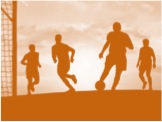Exercise boosts stem cells to become bone, not fat
Is it true that exercise boosts stem cells? You have stem cells throughout your body which act as the “maintenance men” of the body (see our practice’s e-book-Orthopedics 2.0). The body’s mesenchymal stem cells that live in your bone marrow are most likely to become fat or bone, depending on which path they follow. Using treadmill-conditioned mice, a research team recently demonstrated that aerobic exercise triggers those cells to become bone more often than fat. The exercising mice ran less than an hour, three times a week, enough time to have a significant impact on their blood production. In sedentary mice, the same stem cells were more likely to become fat, impairing blood production in the marrow cavities of bones. This mechanism is the same one thought to lead to osteoporosis-stem cells in the bone preferentially become fat versus new bone. The same thing also likely occurs in bone diseases such as avascular necrosis. The upshot? To enhance the success of bone marrow derived therapies, aerobic exercise may help!

If you have questions or comments about this blog post, please email us at [email protected]
NOTE: This blog post provides general information to help the reader better understand regenerative medicine, musculoskeletal health, and related subjects. All content provided in this blog, website, or any linked materials, including text, graphics, images, patient profiles, outcomes, and information, are not intended and should not be considered or used as a substitute for medical advice, diagnosis, or treatment. Please always consult with a professional and certified healthcare provider to discuss if a treatment is right for you.
